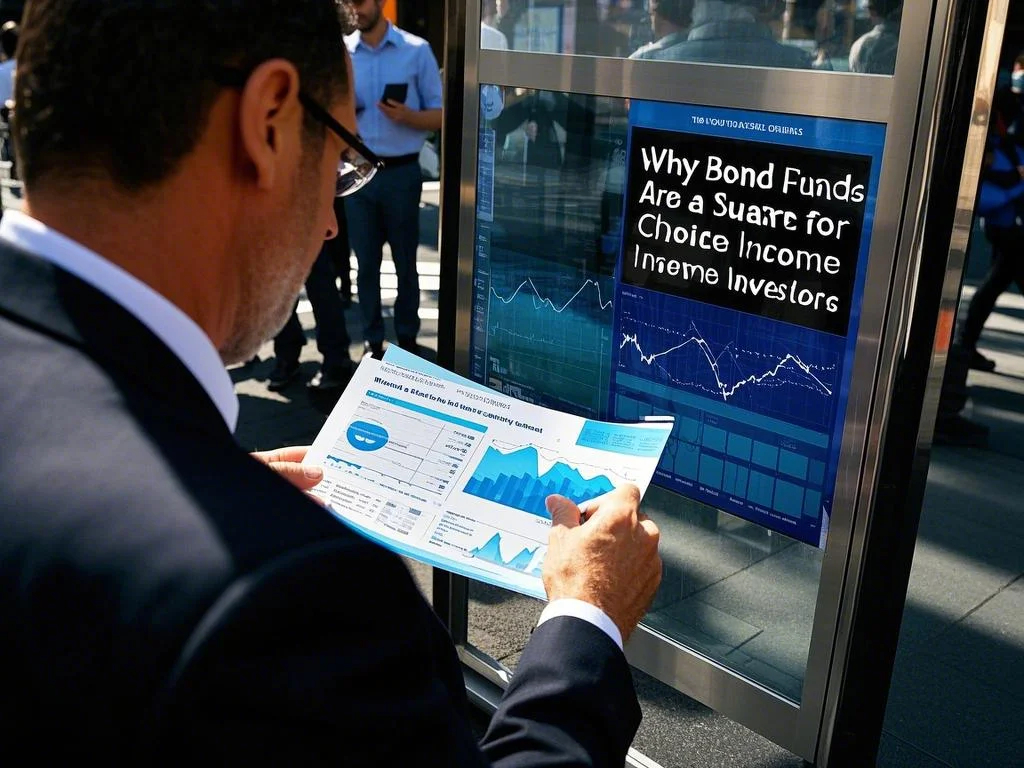Understanding the Key Metrics for Bond Fund Performance
When it comes to making informed investment decisions, analyzing bond fund performance is essential. Unlike stocks, where price appreciation is often the primary focus, bond funds are evaluated based on a combination of yield, credit quality, and risk-adjusted returns. Yield, which represents the income generated by the fund’s underlying bonds, is a critical metric for income-focused investors. However, it’s important to look beyond yield alone. A high-yielding bond fund may come with higher risk, so it’s crucial to assess the credit quality of the bonds in the fund. Bonds with higher credit ratings are generally safer but may offer lower yields, while lower-rated bonds can provide higher returns but come with increased risk of default.
Another key metric to consider is the fund’s duration, which measures its sensitivity to interest rate changes. Bond prices tend to move inversely with interest rates, so funds with longer durations are more volatile in a rising rate environment. On the other hand, funds with shorter durations are less sensitive to interest rate fluctuations and may be a better choice for conservative investors. Additionally, look at the fund’s expense ratio, as high fees can eat into your returns over time. By carefully evaluating these metrics, you can gain a clearer picture of a bond fund’s performance and make more informed investment decisions.
Developing Effective Bond Investment Strategies
To maximize the potential of your bond investments, it’s important to adopt effective bond investment strategies. One popular approach is diversification, which involves spreading your investments across different types of bonds, such as government bonds, corporate bonds, and municipal bonds. This helps reduce the impact of any single bond’s poor performance and ensures a more stable overall return. Another strategy is laddering, where you invest in bonds with varying maturities. This approach helps spread out interest rate risk and provides a steady stream of income as bonds mature and are reinvested at prevailing rates.
For investors seeking tax-efficient income, tax-free bonds can be a valuable addition to your portfolio. These bonds, often issued by municipalities, offer interest income that is exempt from federal income tax and, in some cases, state and local taxes as well. By incorporating tax-free bonds into your investment strategy, you can enhance your after-tax returns and reduce your overall tax burden. Additionally, consider using bond funds to gain exposure to a diversified portfolio of bonds without the need to manage individual securities. By combining these strategies, you can build a resilient bond portfolio that delivers consistent income and long-term growth.

How Mutual Fund Ratings Can Guide Your Bond Fund Selection
When selecting bond funds, mutual fund ratings can be a valuable tool for evaluating performance and risk. Ratings from agencies like Morningstar or Lipper provide an objective assessment of a fund’s historical performance, risk profile, and management quality. These ratings are typically based on factors such as the fund’s returns relative to its peers, its volatility, and the consistency of its performance over time. A high-rated fund is generally considered to have a strong track record and may be a more reliable choice for investors.
However, it’s important to use mutual fund ratings as just one piece of the puzzle. While a high rating can indicate strong past performance, it doesn’t guarantee future success. Be sure to also consider the fund’s investment strategy, expense ratio, and alignment with your financial goals. For example, a highly rated bond fund with a long duration may not be suitable for a conservative investor nearing retirement. By combining mutual fund ratings with your own research and analysis, you can make more informed decisions and choose bond funds that align with your investment objectives.
Choosing the Best Bond Brokers for Your Investment Needs
To successfully invest in bond funds, it’s important to work with the best bond brokers. A good broker can provide access to a wide range of bond funds, competitive pricing, and valuable research tools to help you make informed decisions. When selecting a broker, consider factors such as trading fees, account minimums, and the availability of educational resources. Some brokers also offer commission-free trading on certain bond funds, which can significantly reduce your costs over time.
Another important consideration is the broker’s platform and tools. Look for a broker that offers a user-friendly interface, advanced charting tools, and real-time market data. These features can help you monitor your investments and make timely decisions based on market conditions. Additionally, consider the broker’s customer service and support. A broker with responsive customer service can be invaluable if you encounter any issues or have questions about your investments. By choosing the right broker, you can maximize the benefits of bond funds and build a portfolio that meets your financial goals.
Balancing Risk and Reward in Your Bond Fund Portfolio
One of the most important aspects of bond fund investing is balancing risk and reward. While bond funds are generally considered safer than stocks, they are not without risk. Interest rate risk, credit risk, and inflation risk are all factors that can impact the performance of bond funds. To manage these risks, it’s important to diversify your portfolio across different types of bond funds, such as government bond funds, corporate bond funds, and international bond funds. This diversification helps reduce the impact of any single sector’s poor performance and ensures a more stable overall return.
Additionally, consider the role of tax-free bonds in your portfolio. These bonds can provide tax-efficient income and help reduce your overall tax burden, making them an attractive option for investors in higher tax brackets. However, it’s important to weigh the potential benefits against the risks and choose bonds that align with your financial goals and risk tolerance. By carefully balancing risk and reward, you can build a bond fund portfolio that delivers consistent income and long-term growth.
Conclusion: Making Smarter Bond Fund Investment Decisions
Analyzing bond funds and making informed investment decisions requires a combination of research, strategy, and careful consideration of your financial goals. By understanding key metrics like bond fund performance, adopting effective bond investment strategies, and leveraging tools like mutual fund ratings, you can build a portfolio that meets your needs. Additionally, working with the best bond brokers and incorporating tax-free bonds can help you maximize your returns while minimizing risk.
Ultimately, the key to successful bond fund investing is to stay informed and remain disciplined. Regularly review your portfolio, rebalance as needed, and adjust your strategy based on changing market conditions. By taking a proactive approach to bond fund investing, you can achieve your financial goals and build a portfolio that delivers consistent income and long-term stability.
